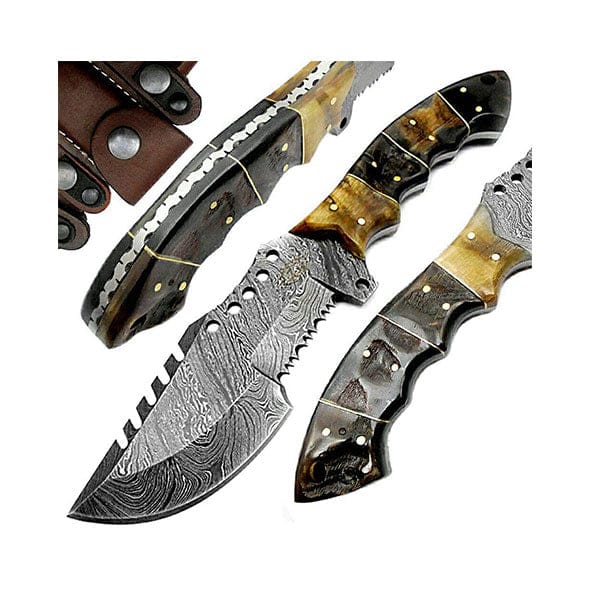
What Was The Original Damascus Steel?
Posted by Best.Buy. Damascus1 on
Origin
The most obvious answer to the question of where the name steel comes from is the Syrian city of Damascus. It is not clear whether the name refers to tools manufactured in Damascus or to tools traded and sold in Damascus. Another possible explanation is that the name derives from the word "Damas", which means "irrigated" in Arabic. This makes some sense as the surface of Damascus steel has a wavy appearance.
Whatever the exact answer, Islamic sword makers hundreds of years ago in the Middle East certainly made excellent blades from Damascus steel. Thanks to their skilful forging, some of them have survived to the present day.
Composition
The famous weapons that were made from the original Damascus steel were themselves made from a different type of steel called wootz. This type of steel comes from India and was traded in Damascus between the 3rd and 4th centuries.
The special method of producing wootz steel was lost in the 18th century when the production of weapons increased and the demand for Damascus swords decreased. Other possible explanations are that trade routes were lost and that the Indian iron ore mines were exhausted.
This is a significant loss because wootz is a raw material and Damascus steel cannot be made without it. Early attempts to reproduce wootz involved the addition of various metals to ordinary steel, but these were unsuccessful.
It was later discovered that wootz was probably made by mixing iron with charcoal at very high temperatures and then cooling it slowly. This explains the high carbon content of Damascus steel compared to standard steel. The original analysis of modern Damascus steel revealed that carbon nanotubes are also present in the metal structure.
Production
Unwilling to share their secrets with the rest of the world, Arab swordsmiths never revealed specific details of how the raw wotz was used to make the spectacular Damascus steel weapons.
We know that Damascus steel can be very sharp and hard, but the exact production temperature and tempering method are not clear. Some sources indicate that the blades were forged at a relatively low temperature and then hardened in donkey urine.
The beautiful finish of the steel surface was achieved by placing the blade with acid, although the overall pattern was the result of the planning, forging and cooling process.
Damascus Steel Variants
Pattern-welded steel
To produce pattern-welded Damascus steel, several layers of iron and steel are laid on top of each other and then joined at high temperatures. In order for the layers to bond properly, this must be done in an oxygen-free environment.
After the initial forging, the knife blanks must be stretched (at high temperature) with a hammer. It must then be repeatedly bent and drawn until the knife has hundreds of layers. This method makes the blade very durable, although Damascus knives were not originally made in this way.
Crucible
This production technique more closely mimics the original Damascus steel production technique, attempting to recreate wootz steel as a raw material. John Verhoeven and Alfred Pendray are two scientists who documented their attempts in the 1990s.
To make wootz steel, iron ore is mixed with leaves and wood and then smelted. The iron absorbs carbon from the plant material to become wootz steel with a high carbon content.
Verhoeven and Pendray hoped to mimic the iron carbide grains in the original Damascus steel by forging wootz at low temperatures. To avoid damaging the wavy pattern on the surface, the temperature had to be carefully varied during the machining process.
Stainless Steel
The use of stainless steel for the Damascus blade contradicts the standard method of production of this metal. Originally, only high-carbon steels were used for Damascus steel. Using stainless steel instead of high carbon steel can still produce a very beautiful knife, but with different mechanical properties.
Using the welding process described above, layers of stainless steel can be forged and welded in a single workpiece. A Damascus stainless steel blade is made up of two or more types of stainless steel. It can then be stretched and folded several times to increase its strength. Heat treatment can improve the hardness of the blade.

